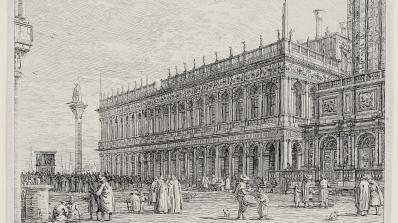European Art at Dartmouth
Location
Temporary Exhibitions, Lathrop, Jaffe, and Hall Galleries
About
The earliest known European objects to arrive at Dartmouth were “a few coins and curiosities” obtained by President John Wheelock during his 1783 tour of England, France, Holland, and Scotland. The collection grew gradually throughout the nineteenth century, but the introduction of European art history courses in 1905 led to a significant expansion of the College’s holdings. A dramatic increase in gifts and acquisitions occurred after the 1985 opening of the Hood Museum of Art, which now houses several thousand European objects dating from the Renaissance to the early twentieth century.The core of the European collection, comprised of an exceptional array of works on paper, has been significantly enhanced in recent decades by the addition of a large number of remarkable paintings and sculptures. The exhibition highlights over 150 objects from the Italian and German Renaissance, the Dutch Golden Age, the Enlightenment and Romantic periods, and the early modern era. Featured artists include Andrea Mantegna, Pietro Perugino, Albrecht Dürer, Claude Lorrain, Rembrandt van Rijn, Jan Davidsz. de Heem, Louis-Léopold Boilly, John Constable, Sir Lawrence Alma-Tadema, Georges Braque, and Pablo Picasso.
Exhibition Curator
T. Barton Thurber
Related Publications
European Art at Dartmouth: Highlights from the Hood Museum of ArtA Closer Look: A Still-Life with Grapes by Jan Davidsz. de HeemA Closer Look: Guitar on a Table by Pablo Picasso
Additional Information
Related Exhibitions
Related Stories
- European Art at Dartmouth: Highlights from the Collection of the Hood Museum of Art (winter 2009)
- European Art at Dartmouth: Highlights from the Collection of the Hood Museum of Art (autumn 2008)
- Recent Acquisitions: Unknown Roman, St. Francis Borgia, about 1700
- Recent Acquisitions: Pompeo Batoni, William Legge, second Earl of Dartmouth (1731–1801), 1756
- Recent Acquisitions: Edgar Degas, On Stage III, 1876–77
- Recent Acquisitions: Charles Fairfax Murray, The Triumph of Love, 1870s
- Recent Acquisitions: Louis-Léopold Boilly, Young Woman Reading in a Landscape, 1798
